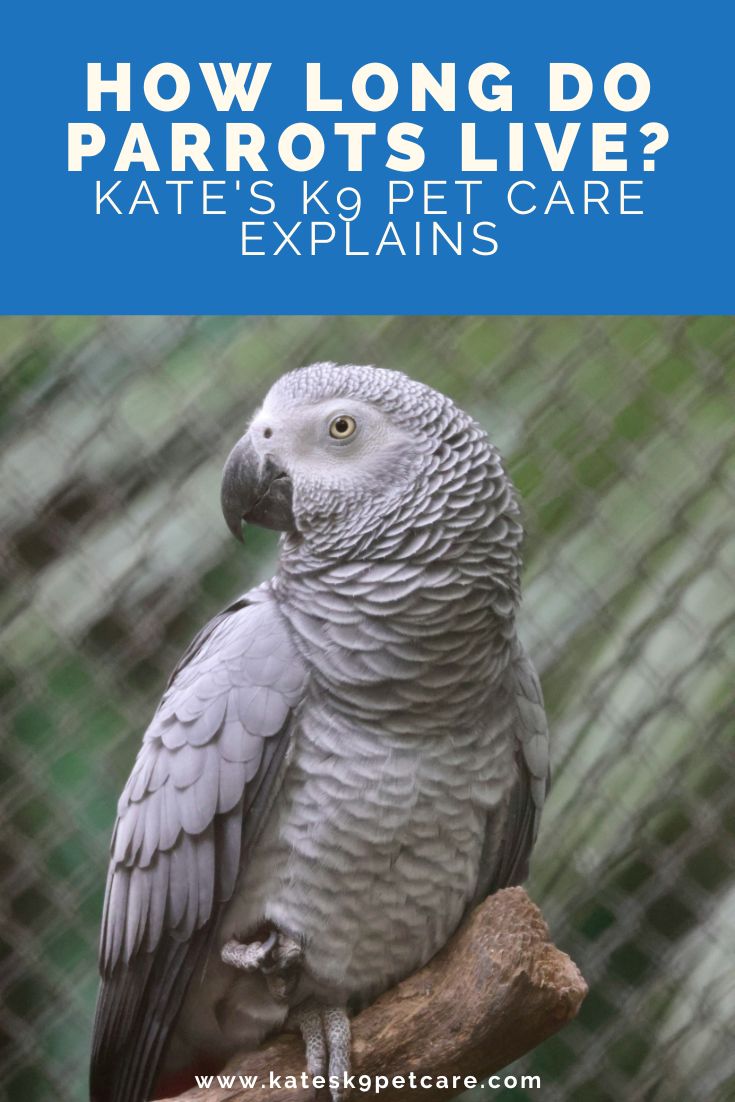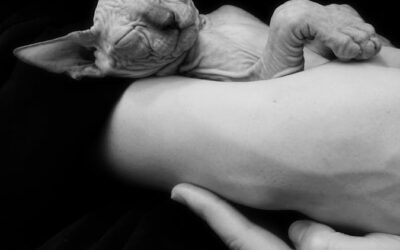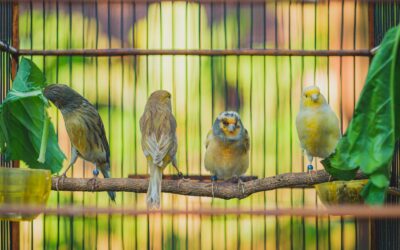If you’re thinking of getting a parrot as a pet, you’re probably wondering how many years you’ll be able to enjoy your feathered friend for. How long do parrots live? It actually greatly varies per species, but the good news is that generally speaking, parrot lifespan is pretty impressive!
Keep reading for everything you need to know about the life expectancy of parrots and how you can help make sure your bird lives a long and happy life.
How long do parrots live?
Before we go into parrot lifespan, it’s important to consider that there are multiple ways of looking at age. We could go by average lifespan, potential lifespan or even median lifespan and get completely different numbers! There is also a big difference between parrot lifespans in the wild and in captivity. One thing we can definitely say for sure is that parrots are among the most long-lived pets out there. Larger species, especially cockatoos, have been confirmed to be able to make it to 80+ years old in lucky cases!
Even tiny parrots like the ubiquitous budgie can actually live for up to 30 years, although most of them pass away much earlier than that due to improper care. In any case, whatever parrot you choose to add to your family, you should make sure to give at least some thought to what your life is going to look like in a few years. Obviously we can never predict where things are going to go, but since many larger parrots have the potential to actually outlive you, it’s important to think long and hard before adding one to your family.
The chart below contains some popular parrot species and their potential lifespans. Note, again, that this is potential. As we’ll lay out below, there are lots of factors that influence how long your parrot ends up living. Not all of them are in our hands. With a combination of good care and a dose of luck, though, your bird could well make it to (or even beyond) the age listed.
[divilifeshortcode id='7986']
Parrot lifespan chart
| Agapornis roseicollis (Peach-faced lovebird) | Up to 30 |
| Amazona auropalliata (Yellow naped Amazon parrot) | Up to 60 |
| Ara ararauna (Blue and yellow macaw) | Up to 60 |
| Aratinga solstitialis (Sun conure) | Up to 30 |
| Bolborhynchus lineola (Lineolated parakeet) | Up to 15 |
| Cacatua moluccensis (Moluccan cockatoo) | Up to 70 |
| Eclectus roratus (Eclectus parrot) | Up to 50 |
| Forpus coelestis (Pacific parrotlet) | Up to 30 |
| Melopsittacus undulatus (Budgie) | Up to 20 |
| Myiopsitta monachus (Quaker parrot) | Up to 30 |
| Nymphicus hollandicus (Cockatiel) | Up to 30 |
| Platycercus eximius (Eastern rosella) | Up to 25 |
| Poicephalus senegalus (Senegal parrot) | Up to 40 |
| Psittacula krameri (Indian ringnecked parakeet) | Up to 40 |
| Psittacus erithacus (African grey parrot) | Up to 60 |
| Pyrrhura molinae (Green-cheeked conure) | Up to 30 |
| Trichoglossus moluccanus (Rainbow lorikeet) | Up to 25 |
What influences parrot lifespan?
All this talk about parrot lifespan is great, but it’s important to keep in mind that the ages listed are not a given. Whether your own pet parrot will make it to a respectable age or not depends almost entirely on you. Good care, a proper diet, avoiding accidents and allowing your parrot to exhibit its natural behaviors are all contributing factors.
Let’s have a quick look at some of the things you can do to make sure your parrot stays happy and healthy for years to come!
Diet
One of the care aspects where things most frequently go wrong when it comes to parrot care is diet. The myth that these birds can thrive on a diet of just dried packaged seeds is still very pervasive. And that’s not all that surprising, because it’s true that some wild species such as budgies mostly eat grass seed.
If you take a closer look at parrot dietary needs, though, you’ll quickly find that seeds should not form the base. Yes, some wild parrots mostly live off them, but they’re not munching on boring packaged seed mixes. They eat seeds in all their states: unripe, ripe, dry, and sprouted. Additionally, they move around infinitely more than any indoor pet parrot ever would. The high fat content of seeds is an advantage to them, not a problem, and they supplement their diets with all sorts of additional snacks.
Although we’re usually not able to sample exactly the variety that parrots eat in the wild (and many of these items are just not available in our home regions), we can let their wild diets inspire us. Indian ringneck parakeets, for example, feed on flower buds, fruits, veggies, berries and seeds. They will also eat grasses, legumes and dates. Even farmers’ crops aren’t safe from them, as they love corn and sunflower seeds.
So, how do we translate this to pet parrots? We’ll have to keep in mind that wild ringnecks can easily eat more sugary and fatty foods, as they fly large distances daily and get a lot of exercise. As such, the idea is to maintain the same level of variety, while decreasing the amount of sugar and fat. We can replace them with nutrient-dense but low-calorie options.
For example:
- 60% high-quality pelleted food, 20% fresh veggies, 10% fresh fruit, 10% (sprouted) seeds and other extras.
The above is obviously only an example—dietary needs vary from species to species. It’s the way of thinking itself, keeping the wild parrot in mind but adjusting for captive circumstances, that’s important.
Did you know? Sunflower seeds are still marketed as a parrot food. Parrots do love these seeds, but they should only be used as (training) treats. They’re extremely high in fat and don’t provide much in the way of actual nutrition at all.

A high-quality diet with lots of fresh foods is essential to long-term parrot health.
General care
Aside from diet, there are many more general care factors that play significant parts in keeping your parrot healthy. They mostly center around safety and (mental) exercise.
- Your parrot should have a large cage and plenty of time to roam outside. This helps stimulate its mind and aids in preventing obesity, a big “sneaky” parrot killer.
- Your parrot should have access to an array of different parrot toys and be able to play with you or other parrots on a daily basis. Training time is also a perfect enrichment opportunity. Again, these factors are great for both your bird’s mind and its body.
- Any area that your parrot has access to should be “parrot-proofed”. This means it should be free of dangerous items, as well as fumes from smoke, perfumes, air fresheners, non-stick pans and more. Birds have very sensitive lungs!
- You should read up a little on basic parrot emergency care and keep a little first aid kit ready. Additionally, of course, you should have the number for a reputable avian vet on hand.
Luck
As much as we can try to provide the best possible care for our pet parrots, not all of it’s in our hands. Accidents do happen, and so do diseases.
Many pet store birds don’t have the best genetics, meaning they’re more prone to health issues like the formation of tumors. If you have a rescue bird it’s even iffier, because you will often have no clue what it went through before ending up in your care. All you can do is make sure your care is top-notch and the rest is up to fate!
Famous old parrots
So, how long do parrots live? A pretty long time in some cases! A quick look at the Guinness Book of World Records and other sources reveals a wide array of parrots that (supposedly) reached crazy ages.
Some are more believable than others (if it’s in the Guinness Book, it’s verified). We’ll let you judge for yourself:
- Oldest parrot (according to the Guinness Book): Cookie the Major Mitchell’s cockatoo, who passed away at 82.
- Oldest budgie: Charlie the budgie. We couldn’t find the Guinness Book page but he’s apparently listed in there as having lived for 29 years.
- Oldest cockatiel living (according to the Guinness Book): Sunshine, who was 32 in 2016.
- A scientific study of parrot lifespan, “Survival on the Ark”, lists their oldest recorded bird as being a 92-year-old Moluccan cockatoo.
- Poncho the parrot is a greenwing macaw who was said to have been 90 years old in 2015.
- Charlie the parrot, a macaw, is said to be over 115 years old. It’s also claimed that Charlie once belonged to Winston Churchill, although this has been pretty solidly debunked.
Sources & further reading








